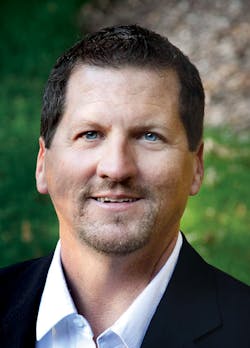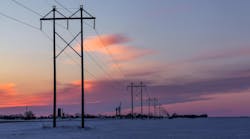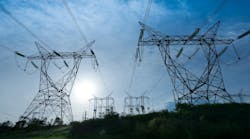Our infrastructure is made up of many components, whether it be providing services (energy and drinking water), facilitating transportation (aviation, bridges, inland waterways, ports, rail and roads), protecting us from floods (dams and levees), disposing waste (hazardous waste, solid waste and wastewater) or ensuring a higher quality of life (schools and public parks).
Every four years, the American Society of Civil Engineers (ASCE) releases an Infrastructure Report Card; I serve as one of the energy representatives. The last Report Card was released in March 2017. The cumulative grade for all of America’s infrastructure was a D+, and energy was right in line with this overall grade with a D+ as well. But before we get excited over this ‘poor’ grade, let’s look at the definition of a D: Poor, at risk. The infrastructure is in poor to fair condition and mostly below standard, with many elements approaching the end of their service life. A large portion of the system exhibits significant deterioration. Condition and capacity are of serious concern with strong risk of failure.
While parts of our energy grid are newer, most of our grid is definitely approaching the end of its service life, thus the D+ grade is about right in accordance to this definition.
Recently, we have had two major hurricanes hit the U.S. mainland and a third hit a U.S. territory. We have all seen the news about the devastation, and some of us have personally endured it. Storms like these test our infrastructure and expose its weaknesses, but they also expose our strengths.
It is too early to fully assess the extent of the damages from Hurricanes Harvey and Irma, but fellow ASCE associates from both regions have informed other ASCE associates that the transmission lines in their specific utilities suffered very few problems. For one utility, the only physical failure in its entire transmission system was a broken insulator. For another utility, the few transmission structures that were damaged were from an over-filled river washing out the foundations. So while we have found our strengths, it is very clear where our weaknesses are.
While hurricanes have dominated our news lately, nearly every part of the United States has its ‘storm’ to deal with. As a resident of the Midwest, we have tornadoes, severe wind storms and ice storms to deal with. While living in the Pacific Northwest in the late 1990s, I learned what an earthquake really felt like and knew that a nearby volcano could blow up at any time — and we still had that darn wind to deal with there, too.
The simple fact is that no matter where we live, there is a storm that, at any given time, can disrupt our infrastructure and affect our quality of life, if not our very lives.
Can we design every part of our infrastructure to withstand all of our various storms? Absolutely not. However, various ASCE committees have spent decades determining what a reasonable storm might be; therefore, we can design our infrastructure accordingly. People live and work in buildings, so we design them for very high probability levels of wind, ice and seismic occurrences (ASCE-7 Minimum Design Loads for Buildings and Other Structures.) But people don’t live and work ‘in’ our electric gird, so we design them for much lower probability levels.
Currently, ASCE-74 Guidelines for Electrical Transmission Line Structural Loading interprets ASCE-7 for use in our industry and uses just a 50-year return period of wind and ice (some coastal areas range up to a 90-year wind return period.) This doesn’t mean that we only get a storm of such magnitude every 50 years; it means that over a long period of history, that storm would only be exceeded an average of every 50 years. A better way to think of this in our limited lifetimes is that there is a 1 in 50 chance that such a storm would happen in any given year, so we have a 2% chance that such a storm will occur in the next year.
With the increasing importance of electricity in our society — and with all other infrastructure basically relying on the electric infrastructure — is that a reasonable chance? Just as building codes are updated after learning from a storm, should we as an industry consider updating our codes? Further, shouldn’t we consider that all of our electric grid be designed to these anticipated storms, not just our transmission system?
Perhaps now is the time we should start following ASCE standards and manuals of practices for all of our electric infrastructure. ♦
Otto J. Lynch is vice president and co-owner of Power Line Systems Inc. He is a member of ASCE, IEEE and NESC. He is a registered professional engineer.



